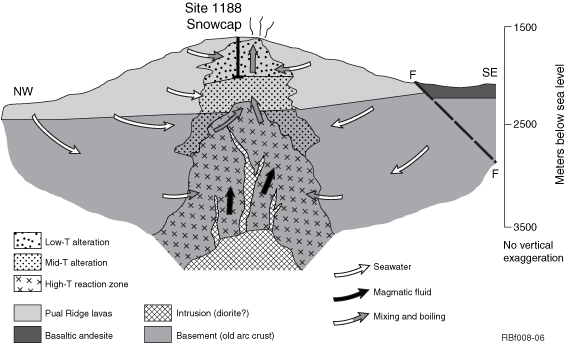
Figure F12. Conceptual cross section through the Snowcap site of the PACMANUS hydrothermal system, illustrating salient features of a "PACMANUS pressure cooker" model. Drilling to 387 mbsf at Site 1188 penetrated more than halfway into the Pual Ridge volcanic edifice but remained within the relatively low temperature, clay-dominated crest of the subseafloor alteration system. Magmatic fluids emanating from a subjacent intrusion (acting also as the heat source driving fluid circulation) have progressively mixed with seawater drawn in at all levels, commencing in the high-temperature reaction zone (probably within basement) directly above the intrusion. Fluid flow was predominantly via fractures (not illustrated). Volume expansion induced by high fluid pressures during alteration of the volcanic sequence and fluid expansion caused by phase separation contributed to breaching of an impervious cap of unaltered lavas, enabling venting at the seafloor. In reality the patterns of alteration and fluid flow are far more complex than illustrated (see text). The diagram does not show presence of a younger lava flow and chimney field at Tsukushi, just south of the section line, nor does it attempt to portray other temporal complexities such as relationships between phases of alteration and mineralization.


![]()